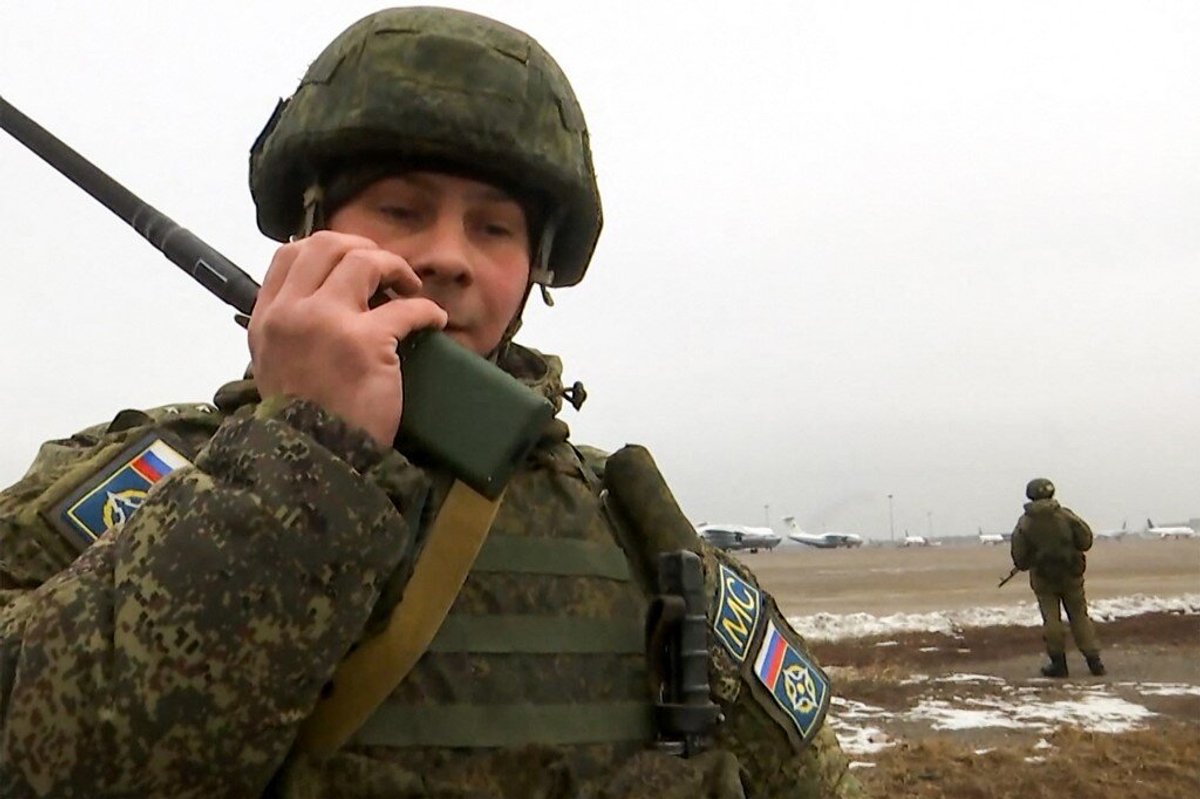Chinese nationals in Russia have been caught illegally exporting Russian military equipment in recent years, according to Russian law enforcement.
The equipment includes body armor, bullet casings, chest plates and combat backpacks. Industry representatives claimed that the equipment was smuggled to allow Chinese manufacturers to make counterfeit versions of the hardware.
JOIN US ON TELEGRAM
Follow our coverage of the war on the @Kyivpost_official.
Russian media outlet Izvestia, citing law enforcement sources, said multiple arrests had been made in recent years. It said that a 28-year-old Chinese man born had been caught earlier this month shipping equipment to China. He was in possession of parts of Russia’s Ratnik combat system, including the 6Sh117 patrol backpack and a modular vest – the items were confiscated.
The sources told Izvestia that the same person previously illegally shipped “two general-purpose 6B45 bulletproof vests, two more Ratnik modular transport vests, combat backpacks and other military equipment classified by Russian law as military equipment” to China.
The publication named other instances in recent years. In December, a Chinese student in Moscow was caught in his dormitory with bulletproof vests, bullet casings, armored chest plates, among other equipment, that he purchased on local sites. In the fall of 2022, another Chinese national was caught exporting sensors to China without the proper paperwork.

Other Topics of Interest
World Briefing: Trump’s State Department Overhaul, Global Tensions, and Protests Across the US
The world in focus, as seen by Canadian leading global affairs analyst Michael Bociurkiw in a quick review of the biggest news in international media today.
Izvestia noted that Russia banned exports of military equipment, including bulletproof vests, on July 19, 2022, citing Decree No. 1299 “On approval of the list of dual-use goods and technologies that can be used in the creation of weapons and military equipment and for which export control is exercised.”
Legality of surplus items
While exporting military equipment has been banned in Russia since 2022, its purchase and sale domestically is not clear-cut.
Even though it is possible for militaries – including the Russian military – to sell decommissioned equipment that eventually winds up in the civilian market, the legality of selling modern in-service equipment is more opaque.
Equipment issued to personnel is, as a rule, considered to remain state property in most militaries, and thus sales are generally prohibited. As a result, modern equipment rarely ends up on the civilian market.
But wherever there is a demand, supply will soon follow – be it domestic or international – by exploiting loopholes such as declaring it lost in combat or old-fashioned stock accounting errors fueled by corruption.
In late 2022, prices for bulletproof vests in Russia skyrocketed 20 times due to the rising demand caused by Russia’s invasion of Ukraine, according to Russian media Meduza at the time.
But what about international demand – in China, for example?
Motivation behind illegal exports
Industry representatives told Izvestia that illegal exports to China are driven by a desire to copy and manufacture counterfeit versions of the Russian equipment.
Ruslan Shapiev, CEO of Russian military equipment manufacturer RUSARM, suggested to Izvestia that industrial or political espionage could be one reason for the illegal exports.
“If a foreigner somehow legally or illegally exports such goods from us, he may still have serious problems in China,” he said. “But if they are confident, it is possible that we are talking about employees of certain special services. Or is it industrial espionage? China has been famous for this behavior since the beginning of its economic growth.”
However, without knowing the affiliation of the Chinese recipients of the shipments, such claims remain speculation at best.
A more mundane explanation could just be that the Chinese military enthusiasts have a fascination with Russian equipment – hinted at by the testimonies of the two captured Chinese soldiers in Ukraine, when they talked about the influence of Russian narratives in the country that prompted them to join the fight.
Fake-check: Chinese-made Russian copies have no place in Ukraine
One unnamed source claimed in a comment to Izvestia that Chinese-made counterfeit versions of Russian equipment have been found on deceased Ukrainian troops.
“According to him, counterfeit products made from cheaper materials, copying Russian military uniforms and other items of equipment, are regularly seen on deceased Ukrainian servicemen in the battlefield of the [special military operation],” the report states, referring to the invasion using the Kremlin-approved glossary.
Vadym “Sonik” Feshchenko, a former Ukrainian grenadier and drone operator, cast doubt on Izvestia’s claim in a comment to Kyiv Post.
Feshchenko doubted that the Ukrainian military would be buying Chinese uniforms or gear that copied Russian Army designs. However, he said individual soldiers might’ve ordered body armor or accessories from AliExpress, China’s e-commerce platform or other outlets, for personal use.
In terms of body armor, Feshchenko said that there was in fact a shortage of high-quality gear at the beginning of Russia’s 2022 invasion – but instead of Chinese copies, Ukrainian troops like himself simply put together whatever they could get hold of.
Feshchenko said that for him and his comrades at the time, it was a combination of used vests from the UK and homemade body armor.
“At the beginning of the full-scale invasion, there was a serious shortage of high-quality equipment. It took about 2–3 months before the army began receiving its first proper gear,” he told Kyiv Post.
However, Feshchenko said the situation, especially with domestic variants, has improved drastically since then.
“Today, there are many domestic manufacturers producing armor plates, Kevlar inserts, bulletproof vests, tactical vests, and pouches of various shapes and sizes for all kinds of ‘gadgets’ on the Ukrainian market. The quality varies widely – from the most budget-friendly to ultra-high-end, top-tier gear,” he said.
Feshchenko added that troops in service were issued domestically produced TEMP-3000 body armor since the 2014 partial invasion.
He added that the domestic market has proliferated since the war was prompted by the 2022 invasion thanks to a combination of foreign aid and domestic producers, to drive up competition.
“With the start of the full-scale war, large volumes of humanitarian aid helped provide protective gear for troops. Over time, however, Ukrainian manufacturers began offering a wide range of personal protective equipment to suit various needs and preferences,” he said.
“Fierce competition among them has led to the creation of high-quality products that now confidently rank among the top on the global defense market,” he added.







